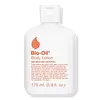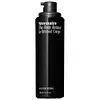What's inside
What's inside
 Key Ingredients
Key Ingredients

 Benefits
Benefits

 Concerns
Concerns

 Ingredients Side-by-side
Ingredients Side-by-side

Water
Skin ConditioningDimethicone
EmollientIsopropyl Palmitate
EmollientEthylhexyl Cocoate
EmollientIsododecane
EmollientIsopropyl Myristate
EmollientUrea
BufferingPolyglyceryl-2 Dipolyhydroxystearate
Skin ConditioningGlycerin
HumectantPentylene Glycol
Skin ConditioningDicaprylyl Carbonate
EmollientPolyglyceryl-3 Diisostearate
EmulsifyingSodium Lactate
BufferingDipentaerythrityl Hexacaprylate/Hexacaprate
EmulsifyingGluconolactone
Skin ConditioningRosa Canina Fruit Oil
EmollientSimmondsia Chinensis Seed Oil
EmollientCalendula Officinalis Extract
Skin ConditioningButyrospermum Parkii Oil
EmollientHelianthus Annuus Seed Oil
EmollientGlycine Soja Oil
EmollientIsostearyl Isostearate
EmollientBisabolol
MaskingOctyldodecyl PCA
EmollientRetinyl Palmitate
Skin ConditioningTocopheryl Acetate
AntioxidantLinoleic Acid
CleansingLinolenic Acid
CleansingTocopherol
AntioxidantSodium PCA
HumectantSodium Hyaluronate
HumectantLactic Acid
BufferingStearalkonium Hectorite
Gel FormingPropylene Carbonate
SolventWater, Dimethicone, Isopropyl Palmitate, Ethylhexyl Cocoate, Isododecane, Isopropyl Myristate, Urea, Polyglyceryl-2 Dipolyhydroxystearate, Glycerin, Pentylene Glycol, Dicaprylyl Carbonate, Polyglyceryl-3 Diisostearate, Sodium Lactate, Dipentaerythrityl Hexacaprylate/Hexacaprate, Gluconolactone, Rosa Canina Fruit Oil, Simmondsia Chinensis Seed Oil, Calendula Officinalis Extract, Butyrospermum Parkii Oil, Helianthus Annuus Seed Oil, Glycine Soja Oil, Isostearyl Isostearate, Bisabolol, Octyldodecyl PCA, Retinyl Palmitate, Tocopheryl Acetate, Linoleic Acid, Linolenic Acid, Tocopherol, Sodium PCA, Sodium Hyaluronate, Lactic Acid, Stearalkonium Hectorite, Propylene Carbonate
Water
Skin ConditioningGlycolic Acid
BufferingMandelic Acid
AntimicrobialRosa Damascena Flower Water
MaskingCaprylic/Capric Triglyceride
MaskingGlycerin
HumectantCetearyl Alcohol
EmollientSodium Hydroxide
BufferingCoconut Alkanes
EmollientHydroxyethyl Acrylate/Sodium Acryloyldimethyl Taurate Copolymer
Emulsion Stabilising1,2-Hexanediol
Skin ConditioningCetearyl Olivate
Sorbitan Olivate
EmulsifyingPropanediol
SolventSilica
AbrasiveSilica Silylate
EmollientMagnesium Stearate
Cosmetic ColorantNiacinamide
SmoothingRetinol
Skin ConditioningSh-Oligopeptide-1
Skin ConditioningSh-Oligopeptide-2
Skin ConditioningSh-Polypeptide-1
Skin ConditioningSh-Polypeptide-9
Skin ConditioningSh-Polypeptide-11
Tocopherol
AntioxidantTetrahexyldecyl Ascorbate
AntioxidantBacillus/Folic Acid Ferment Filtrate Extract
AntioxidantCellulose Acetate Butyrate
C13-14 Alkane
SolventC15-23 Alkane
SolventTricaprylin
MaskingAcetyl Glutamine
Skin ConditioningPentaerythrityl Tetra-Di-T-Butyl Hydroxyhydrocinnamate
AntioxidantLecithin
EmollientCitric Acid
BufferingHippophae Rhamnoides Fruit Oil
Skin ProtectingCoco-Caprylate/Caprate
EmollientDecyl Glucoside
CleansingSodium Hyaluronate
HumectantCaprylyl Glycol
EmollientSodium Benzoate
MaskingPotassium Sorbate
PreservativeSodium Carbonate
BufferingSodium Chloride
MaskingEthylhexylglycerin
Skin ConditioningHydroxyacetophenone
AntioxidantCitronellol
PerfumingGeraniol
PerfumingWater, Glycolic Acid, Mandelic Acid, Rosa Damascena Flower Water, Caprylic/Capric Triglyceride, Glycerin, Cetearyl Alcohol, Sodium Hydroxide, Coconut Alkanes, Hydroxyethyl Acrylate/Sodium Acryloyldimethyl Taurate Copolymer, 1,2-Hexanediol, Cetearyl Olivate, Sorbitan Olivate, Propanediol, Silica, Silica Silylate, Magnesium Stearate, Niacinamide, Retinol, Sh-Oligopeptide-1, Sh-Oligopeptide-2, Sh-Polypeptide-1, Sh-Polypeptide-9, Sh-Polypeptide-11, Tocopherol, Tetrahexyldecyl Ascorbate, Bacillus/Folic Acid Ferment Filtrate Extract, Cellulose Acetate Butyrate, C13-14 Alkane, C15-23 Alkane, Tricaprylin, Acetyl Glutamine, Pentaerythrityl Tetra-Di-T-Butyl Hydroxyhydrocinnamate, Lecithin, Citric Acid, Hippophae Rhamnoides Fruit Oil, Coco-Caprylate/Caprate, Decyl Glucoside, Sodium Hyaluronate, Caprylyl Glycol, Sodium Benzoate, Potassium Sorbate, Sodium Carbonate, Sodium Chloride, Ethylhexylglycerin, Hydroxyacetophenone, Citronellol, Geraniol
 Reviews
Reviews

Alternatives
Ingredients Explained
These ingredients are found in both products.
Ingredients higher up in an ingredient list are typically present in a larger amount.
Glycerin is already naturally found in your skin. It helps moisturize and protect your skin.
A study from 2016 found glycerin to be more effective as a humectant than AHAs and hyaluronic acid.
As a humectant, it helps the skin stay hydrated by pulling moisture to your skin. The low molecular weight of glycerin allows it to pull moisture into the deeper layers of your skin.
Hydrated skin improves your skin barrier; Your skin barrier helps protect against irritants and bacteria.
Glycerin has also been found to have antimicrobial and antiviral properties. Due to these properties, glycerin is often used in wound and burn treatments.
In cosmetics, glycerin is usually derived from plants such as soybean or palm. However, it can also be sourced from animals, such as tallow or animal fat.
This ingredient is organic, colorless, odorless, and non-toxic.
Glycerin is the name for this ingredient in American English. British English uses Glycerol/Glycerine.
Learn more about GlycerinSodium Hyaluronate is hyaluronic acid's salt form. It is commonly derived from the sodium salt of hyaluronic acid.
Like hyaluronic acid, it is great at holding water and acts as a humectant. This makes it a great skin hydrating ingredient.
Sodium Hyaluronate is naturally occurring in our bodies and is mostly found in eye fluid and joints.
These are some other common types of Hyaluronic Acid:
Learn more about Sodium HyaluronateTocopherol (also known as Vitamin E) is a common antioxidant used to help protect the skin from free-radicals and strengthen the skin barrier. It's also fat soluble - this means our skin is great at absorbing it.
Vitamin E also helps keep your natural skin lipids healthy. Your lipid skin barrier naturally consists of lipids, ceramides, and fatty acids. Vitamin E offers extra protection for your skin’s lipid barrier, keeping your skin healthy and nourished.
Another benefit is a bit of UV protection. Vitamin E helps reduce the damage caused by UVB rays. (It should not replace your sunscreen). Combining it with Vitamin C can decrease sunburned cells and hyperpigmentation after UV exposure.
You might have noticed Vitamin E + C often paired together. This is because it is great at stabilizing Vitamin C. Using the two together helps increase the effectiveness of both ingredients.
There are often claims that Vitamin E can reduce/prevent scarring, but these claims haven't been confirmed by scientific research.
Learn more about TocopherolWater. It's the most common cosmetic ingredient of all. You'll usually see it at the top of ingredient lists, meaning that it makes up the largest part of the product.
So why is it so popular? Water most often acts as a solvent - this means that it helps dissolve other ingredients into the formulation.
You'll also recognize water as that liquid we all need to stay alive. If you see this, drink a glass of water. Stay hydrated!
Learn more about Water